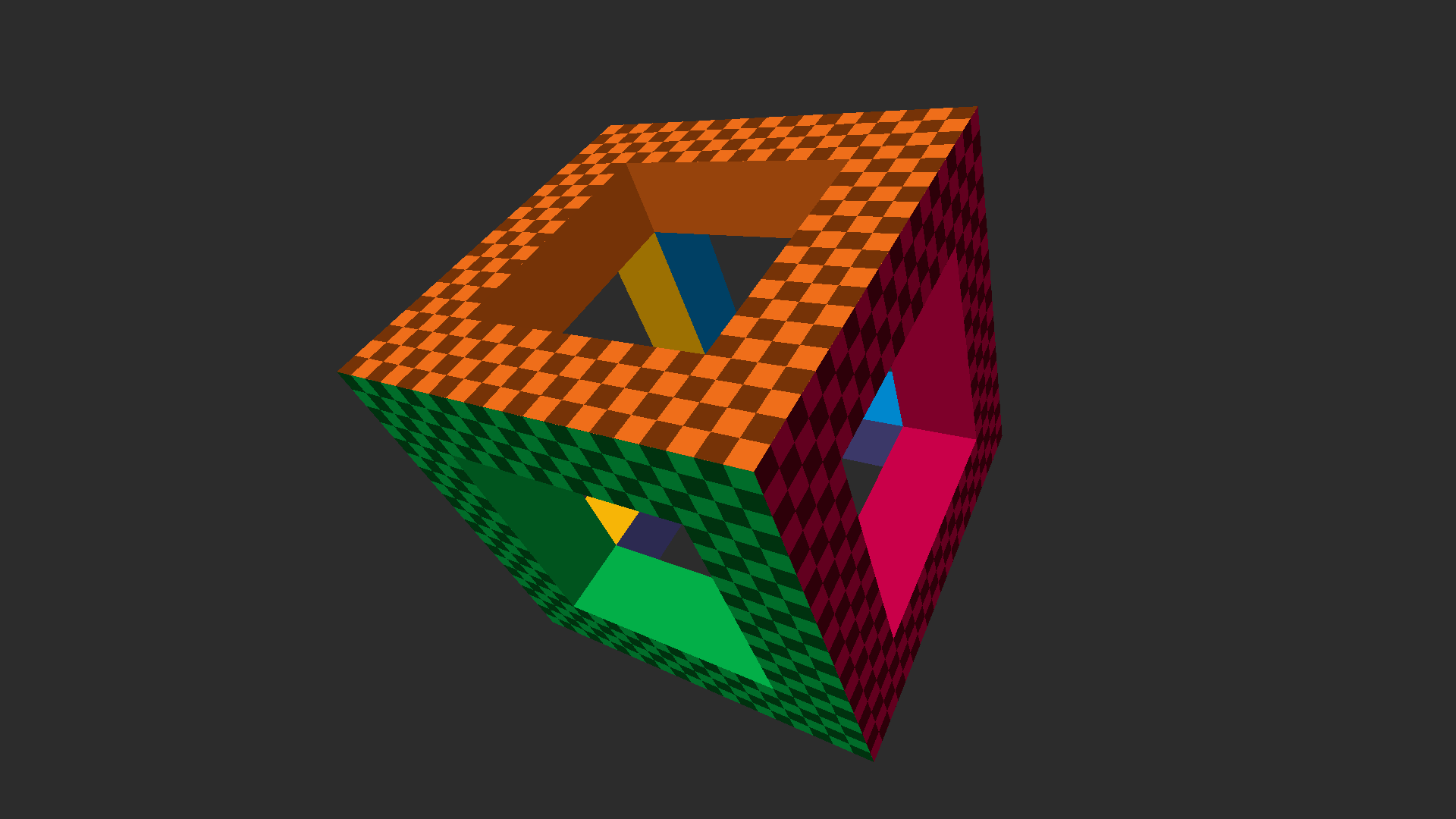Minimal D3D11 reference implementation: An uncluttered Direct3D 11 setup + basic rendering primer and API familiarizer. Complete, runnable Windows application contained in a single function and laid out in a linear, step-by-step fashion that should be easy to follow from the code alone. ~200 LOC. No modern C++, OOP or (other) obscuring cruft. View on YouTube
This file contains hidden or bidirectional Unicode text that may be interpreted or compiled differently than what appears below. To review, open the file in an editor that reveals hidden Unicode characters.
Learn more about bidirectional Unicode characters
| .PHONY: all | |
| all: rot13.wasm | |
| %.wasm.full: %.c | |
| clang $< -g -o $@ | |
| %.wasm.dwarf: %.wasm.full | |
| llvm-dwarfdump $< > $@ | |
| %.wasm: %.wasm.full %.wasm.dwarf |
This file contains hidden or bidirectional Unicode text that may be interpreted or compiled differently than what appears below. To review, open the file in an editor that reveals hidden Unicode characters.
Learn more about bidirectional Unicode characters
| #include <stdio.h> | |
| #include <SDL.h> | |
| int main(void) { | |
| SDL_Init(SDL_INIT_AUDIO); | |
| // the representation of our audio device in SDL: | |
| SDL_AudioDeviceID audio_device; | |
| // opening an audio device: |
This file contains hidden or bidirectional Unicode text that may be interpreted or compiled differently than what appears below. To review, open the file in an editor that reveals hidden Unicode characters.
Learn more about bidirectional Unicode characters
| // This work (SDLblit.cpp, by Cory Bloyd) is free of known copyright restrictions. | |
| // https://creativecommons.org/publicdomain/zero/1.0/ | |
| #include <SDL.h> | |
| inline uint32_t argb(uint8_t a, uint8_t r, uint8_t g, uint8_t b) { return (a<<24) | (r << 16) | (g << 8) | (b << 0); } | |
| int main(int argc, char *argv[]) { | |
| SDL_Init(SDL_INIT_VIDEO); | |
| SDL_Rect screenRect = { 0,0,1024,1024 }; |
This file contains hidden or bidirectional Unicode text that may be interpreted or compiled differently than what appears below. To review, open the file in an editor that reveals hidden Unicode characters.
Learn more about bidirectional Unicode characters
| #pragma once | |
| #if defined(_WIN32) | |
| # include <Windows.h> | |
| #elif defined(__APPLE__) || defined(LINUX) | |
| # include <sys/mman.h> | |
| #endif | |
| #include <optional> | |
| #include "result.hpp" |
This file contains hidden or bidirectional Unicode text that may be interpreted or compiled differently than what appears below. To review, open the file in an editor that reveals hidden Unicode characters.
Learn more about bidirectional Unicode characters
| // | |
| // Author: Jonathan Blow | |
| // Version: 1 | |
| // Date: 31 August, 2018 | |
| // | |
| // This code is released under the MIT license, which you can find at | |
| // | |
| // https://opensource.org/licenses/MIT | |
| // | |
| // |
This file contains hidden or bidirectional Unicode text that may be interpreted or compiled differently than what appears below. To review, open the file in an editor that reveals hidden Unicode characters.
Learn more about bidirectional Unicode characters
| #define WIN32_LEAN_AND_MEAN | |
| #include <windows.h> | |
| #include <dwrite.h> | |
| #include <intrin.h> | |
| #pragma comment (lib, "gdi32.lib") | |
| #pragma comment (lib, "user32.lib") | |
| #pragma comment (lib, "dwrite.lib") | |
| #define CHECK(x) do { if (!(x)) __debugbreak(); } while (0) |
This file contains hidden or bidirectional Unicode text that may be interpreted or compiled differently than what appears below. To review, open the file in an editor that reveals hidden Unicode characters.
Learn more about bidirectional Unicode characters
| gcc -fpic --shared $(python3-config --includes) greetmodule.c -o greet.abi3.so | |
| # can also use $(pkg-config --cflags python-3.5) | |
| # or | |
| # python3 setup.py install --record files.txt --user |
The Gilbert–Johnson–Keerthi (GJK) distance algorithm is a method of determining the minimum distance between two convex sets. The algorithm's stability, speed which operates in near-constant time, and small storage footprint make it popular for realtime collision detection.
Unlike many other distance algorithms, it has no requirments on geometry data to be stored in any specific format, but instead relies solely on a support function to iteratively generate closer simplices to the correct answer using the Minkowski sum (CSO) of two convex shapes.
This file contains hidden or bidirectional Unicode text that may be interpreted or compiled differently than what appears below. To review, open the file in an editor that reveals hidden Unicode characters.
Learn more about bidirectional Unicode characters
| function ShowAutocompletion(obj) { | |
| // Disable default autocompletion for javascript | |
| monaco.languages.typescript.javascriptDefaults.setCompilerOptions({ noLib: true }); | |
| // Helper function to return the monaco completion item type of a thing | |
| function getType(thing, isMember) { | |
| isMember = (isMember == undefined) ? (typeof isMember == "boolean") ? isMember : false : false; // Give isMember a default value of false | |
| switch ((typeof thing).toLowerCase()) { | |
| case "object": |
